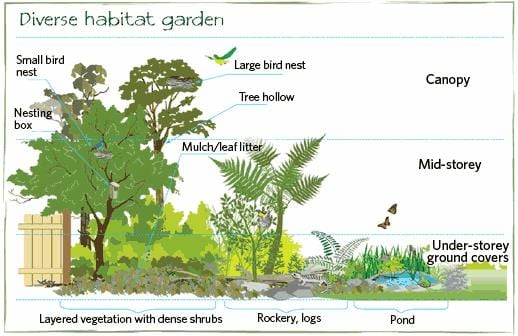The smart Trick of Hilton Head Landscapes That Nobody is Discussing
The smart Trick of Hilton Head Landscapes That Nobody is Discussing
Blog Article
Indicators on Hilton Head Landscapes You Should Know
Table of ContentsThe Single Strategy To Use For Hilton Head LandscapesFascination About Hilton Head LandscapesThe Main Principles Of Hilton Head Landscapes The 45-Second Trick For Hilton Head LandscapesWhat Does Hilton Head Landscapes Mean?The Of Hilton Head LandscapesThe Hilton Head Landscapes Ideas
Line produces all types and patterns and can be made use of in a selection of methods in the landscape. Line in the landscape is developed by the edge between two products, the overview or shape of a kind, or a long direct feature. Lines are an effective device for the developer since they can be made use of to produce a limitless selection of shapes and types, and they control movement of the eye and the body.
Lines can have several qualities, such as those explained listed below, yet they generally serve various purposes. Number 1. Lines in the landscape - landscaping hilton head sc. The buildings of lines figure out exactly how individuals react to the landscape, both emotionally and physically. Straight lines are architectural and strong; they develop an official personality, are usually related to an in proportion design, and lead the eye directly to a focal factor.
The Ultimate Guide To Hilton Head Landscapes
Curved lines produce an informal, natural, relaxed character that is connected a lot more with nature and asymmetrical equilibrium. Bent lines relocate the eye at a slower rate and add enigma to the space by creating surprise sights.
Vertical lines in the landscape include high, narrow plant product, such as trees, or tall structures, such as an arbor or a bird residence on a pole. Straight lines relocate the eye along the ground aircraft and can make an area really feel bigger. Reduced lines are extra controlled and create a sensation of rest or repose.
Hilton Head Landscapes - Truths
Reduced lines are created by low garden wall surfaces, pathways, and brief bushes. Lines are utilized to draw types on a plan. In strategy sight, they specify plant beds and hardscape areas. Lines are likewise created by the vertical forms of built functions and plant product. There are 3 primary line kinds that develop form in the landscape: bedlines, hardscape lines, and plant lines.
Bedlines attach plant material to the house and hardscape since the eye complies with the line, moving the gaze through the landscape. Hardscape lines are developed by the side of the hardscape, which delineates the constructed framework. Line can likewise be created by lengthy and slim materials, such as a fencing or wall.
Getting My Hilton Head Landscapes To Work
Form is found in both hardscape and plants, and it is normally the leading visual element that spatially arranges the landscape and often identifies the design of the garden. The kind of structures, plant beds, and yard accessories also figures out the general kind motif of the garden. Official, geometric forms include circles, squares, and polygons.
Plants develop kind in the yard via their outlines or silhouettes, however kind can likewise be defined by a void or negative space in between plants - hilton head landscapers (https://fliphtml5.com/homepage/yoptk/stevenagonzales/). Circles can be cycles, or they can be separated into fifty percent circles or circle sections and incorporated with lines to create arcs and tangents
All about Hilton Head Landscapes
Circles can additionally be extended right into ovals and ellipses for even more selection and interest. Circles are a solid design kind due to the fact that the eye is always attracted to the center, which can be used to stress a centerpiece or connect various other types. Figure 2. Round kinds in hardscape and yard panels.
The square type can also be fractional and pre-owned repeatedly to produce a grid pattern. Unlike circles, squares are stronger on go to this website the brink, which can be aligned or overlapped to create one-of-a-kind patterns and more intricate forms. Polygons are many-sided forms with straight sides. Triangulars, for instance, are three-sided polygons.
Twisting lines commonly imitate the all-natural course of rivers or streams and can be called smooth lines with deeply curved undulations. Twisting lines (Figure 3) work well for paths, plant bedlines, and dry stream beds. Meandering lines can add rate of interest and mystery to a garden by leading viewers around corners to find new sights and spaces.
The Best Guide To Hilton Head Landscapes

Figure 5. Fragmented sides: tipping stones in path. Kind is one of the most long-lasting top quality of a plant (landscapers in bluffton sc). https://trello.com/w/h1tnhdlndscps. Common plant forms are well developed and standard, as kind is one of the most constant and recognizable attribute of plants. Form can likewise be produced via the massing of plants, where the overall mass develops a different kind than a private plant.
A highly different form should be made use of with careone or more work well as a centerpiece, yet a lot of produce disorder. All-natural plant kinds, as opposed to over-trimmed types, need to establish the mass of the composition. The significance of total form is essentially depending on the viewing perspectivethe type of a tree can show up rather various to an individual standing under the canopy versus viewing the tree from a range in an open field.
Not known Facts About Hilton Head Landscapes
Plant types also produce and specify the space or open spaces in between the plants, producing either convex or concave types in deep spaces. High-arching tree branches commonly develop a concave open room under the branches, and a rounded cover with low branches fills the space to develop a convex type outdoors space under the tree.

Report this page